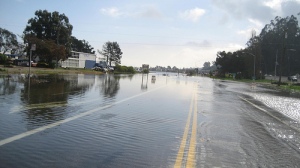VERENAISI RAICOLA
Sea level is expected to continue to rise in Fiji and coastal communities including resort owners need to adapt to this.
Scientists from the Pacific Climate Change Science Program in Melbourne Australia on their latest report on Current and Future Climate of Fiji told regional journalists currently in Australia for leadership and Climate Change reporting that the rise is predicted to be 3 to 16 cm.
The sea-level rise combined with natural year to year changes will increase the impact of storm surges and coastal flooding in the country.
As there is still much to learn, particularly how large ice sheets such as Antarctica and Greenland contribute to sea level rise, scientists warn larger rises than currently predicted could even be possible.
The predictions say that the acidity level of sea waters in the Fiji region will continue to increase over the 21st century with the greatest change under the high emissions scenario by 2030 affecting the fish and sea life negatively.
The impact of increased acidification on the health of reef ecosystems is likely to be compounded by other stressors including coral bleaching, storm damage and fishing pressure.
On a global scale while projections indicate there is likely to be a decrease in the number of tropical cyclones scientists predict an increase in the average maximum wind speed of cyclones by between 2-11 per cent and an increase in rainfall intensity of about 20 per cent within 100 km of the cyclone centre.
In the Fiji region projections indicate a decrease in the frequency of tropical cyclones by the late 21 century and an increase in the proportions of the more intense storm so more cyclone proof building will have to be constructed to withstand these weather changes.
Projections for all emissions scenarios indicate that the annual average of air temperatures and sea surface temperature will continue to increase.
By 2030 under a high emissions scenario this increase in temperature is projected to be in the range of 0.4 to 1.0 degrees Celsius placing a higher risk on the health of the population.
Increases in the average temperature will also result in the rise in the number of hot days and warm nights meaning a significant decline in cooler weather.



